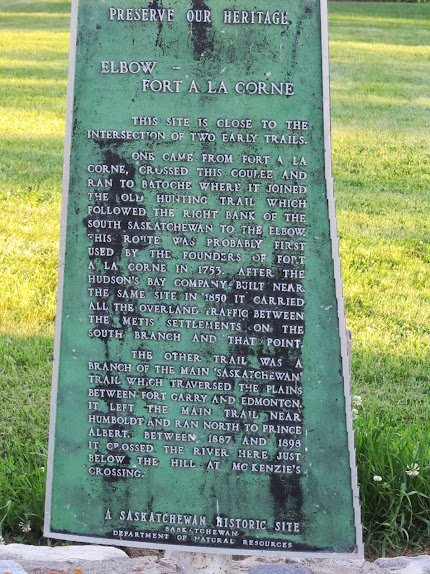Saskatchewan Archaeological Society
The Saskatchewan Archaeological Society (SAS), founded in 1963, is one of the most active and effective volunteer-based archaeological organizations on the continent. We educate the public, promote research and advocate for heritage preservation and protection. Our members include professional archaeologists, avocational archaeologists and members of the general public that are curious about our province's first peoples and other cultures.
What does the SAS do?
- Offers all ages fieldschools, hands-on workshops, annual meeting and conference, annual bus tour, special tours and regional chapters across the province.
- Offers teaching and educational resources such as artefact replicas, "archaeo-kits", "Kiwetinohk"
- travelling rock art exhibit, videos, an extensive library of books, journals, theses, maps and photos, a quaterly newsletter on archaeology, history, natural history, geology and palaeontology news and publications for sale.
- Provides funding to individuals or groups for research projects and the annual Zenon Pohorecky Memorial Bursary to university students.
How do I join?
Contact the SAS!
#1-1730 Quebec Avenue
Saskatoon, SK S7K 1V9
Ph: (306) 664-4124
Fax: (306) 665-1928
Email: saskarchsoc@sasktel.net
Web: www.saskarchsoc.ca
During 2013, the SAS is celebrating its 50th Anniversary of the Annual Gathering and are placing a number of geocaches at archaeological and historically significant sites throughout the province.
SAS #9: The St. Louis Site
This geocache is not located at the archaeology site!
Have you seen the giant bison in St. Louis? Visited the nearby geocache (GCQ4DH) there? This geocache was placed to provide a little more archaeological background on the giant Bison that was found nearby and the cultural history of the immediate area.
The St. Louis Site was discovered as part of a Heritage Resource Impact Assessment (HRIA) into a potential new bridge and connecting highway in May of 2002. Whenever development occurs in Saskatchewan, the Provincial Government’s Heritage Resources Act requires assessment of archaeological potential to be done in order to protect our province’s rich heritage. If an archaeological site is found during assessment, it can either be mitigated (excavated in full or in part) or avoided and protected. Usually assessments include a pedestrian survey of the area to be developed to look for potential artefacts or features on the ground followed by systematic testing to see if there are any cultural deposits below the surface. This is done by trained professional archaeologists and requires a provincially-granted archaeological permit. Testing occurred within the proposed development area and uncovered a tooth from a canid (coyote, wolf, etc.) that had been modified by human hands. This artefact led to further testing in the immediate area where more artefacts such as bison bone and stone tools were found.
The discovery of a number of bison skulls belonging to ancient and extinct species, Bison antiquus and Bison occidentalis were also found. Bison antiquus roamed North America approximately 10,000-18,000 years ago followed by Bison occidentalis, which lived from 5,000 to 10,000 years ago. After the extinction of Bison occidentalis, it was replaced by today’s Bison bison. Through time, we can see decrease in size amongst these three Bison species with Bison antiquus being up to 25% larger than our modern bison. Not only did these extinct bison roam the prairie landscape around modern-day St. Louis but their skeletal remains were found in association with human-made artefacts indicating that there were people in the area upwards of 10,000 years ago!
The oldest cultural occupations found at the St. Louis Site belongs to a period known as the Mummy Cave period that dates to approximately 7,500 to 5000 years ago. The artefacts found from this period indicate that it was a campsite for the people that lived here. The second cultural occupation dates to the Oxbow period (4,700 to 3,800 years ago) and was likely a processing or butchering site of animals. Sites that have more than one cultural occupation (aka multi-component sites) are not very common in the archaeological record of Saskatchewan. As such, the discovery of this site led to further research into the lifeways of the past. Additional excavations were carried out by members of the Department of Archaeology at the University of Saskatchewan and through the SCAPE (Study of Cultural Adaptations in the Prairie Ecozone) project, a five-year multi-disciplinary project that studied human-environment interactions across the Prairies and included individuals from over five different universities!

Reference:
Johnston, Jenna S.
2005 The St. Louis Site (FfNk-7) and the Below Forks Site (FhNg-25): The Faunal Analysis of Two Mummy Cave Series and Oxbow Complex Sites in Central Saskatchewan. Unpublished MA thesis, Department of Archaeology, University of Saskatchewan: Saskatoon.
**Bonus Historical Information: Nearby the geocache location is some information on the intersection of the Elbow-Fort a la Corne trails.